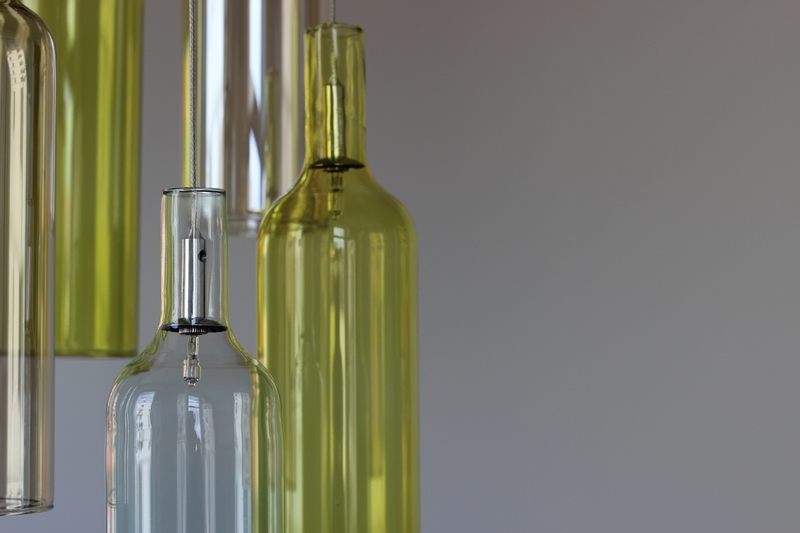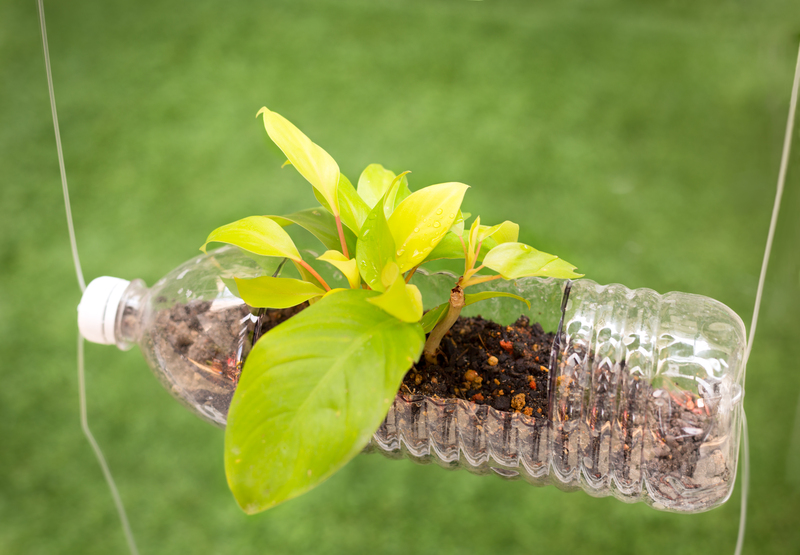Comprehensive Tips for Recycling Cookware Without Harming the Environment
Do you have old or unused pots, pans, and other cookware cluttering your kitchen? Recycling cookware is a fantastic way to minimize waste and promote environmental sustainability, but not all cookware can be tossed into your regular recycling bin. In this in-depth article, you'll discover eco-friendly ways to recycle cookware, protect the planet, and maybe even breathe new life into your old kitchen tools.

Why Recycling Cookware Matters
Modern cookware comes in various materials, including stainless steel, aluminum, cast iron, copper, nonstick coatings, and ceramics. Each of these materials impacts our environment differently. Here's why responsibly recycling or reusing your old cookware is so important:
- Prevents landfill waste: Metal and coated cookware can take hundreds of years to decompose in landfills.
- Conserves resources: Recycling metals saves raw materials and reduces the energy needed for mining and manufacture.
- Reduces pollution: Proper disposal helps prevent harmful chemicals in nonstick coatings from contaminating soil and water.
Understanding Different Types of Cookware and Their Recycling Challenges
- Stainless Steel & Aluminum: Among the easiest metals to recycle but need to be separated from any non-metal components.
- Cast Iron: Highly recyclable and often in demand at scrap yards.
- Nonstick (Teflon-coated): Require special handling due to chemical coatings.
- Copper: Very valuable as scrap but may have other metals fused in.
- Ceramic & Enamel: Not typically accepted in curbside programs, may need special facilities.
*Tip: Always check for composite materials, such as plastic handles or wooden knobs, which must be removed before recycling.
Smart Approaches to Recycling Cookware Environmentally
1. Donate or Repurpose Cookware First
- Charity Shops: If your cookware is still functional, consider donating it to local shelters, thrift shops, or secondhand stores. This extends the life cycle and keeps waste out of landfills.
- Community Centers or Schools: Educational or culinary programs may accept donations of gently used pots and pans.
- Creative Repurposing: Old pans can be used as planters, birdbaths, or for storing small tools and hardware in garages or workshops. This creative upcycling keeps items in use for longer.
2. Know What Materials Your Cookware Contains
Many pans and pots are made from mixed materials. For effective recycling of household cookware:
- Check for riveted or screw-on handles made of plastic or wood.
- Remove glass lids--that are rarely recyclable with the pots.
- Read manufacturer's instructions or product details if available to identify all components.
Separating components ensures smooth acceptance at recycling centers and increases the percentage of material that can be reused.
3. Use Specialized Scrap Metal Recyclers
Most curbside recycling programs reject cookware because of mixed materials and coatings. To recycle pots and pans responsibly:
- Find a local scrap metal recycler--search online for "scrap metal recycling near me" or visit community recycling depots.
- If your item is mostly metal (stainless steel, aluminum, copper, cast iron), scrap yards will often accept it regardless of condition.
- Some advanced facilities accept nonstick pans after the coating is removed, but always call ahead to confirm their policies.
4. Deal With Non-Stick Coated (Teflon) Cookware Carefully
Nonstick coatings like Teflon (PTFE) and ceramic require special attention because:
- The coating may contain perfluorinated compounds (PFCs), which are potentially harmful if incinerated or left to degrade.
- Most municipal recycling programs do not accept nonstick pans, so seek out facilities with specialty processes, such as those focusing on e-waste or chemical disposal.
- Some cookware manufacturers offer take-back or recycling initiatives for their brands; check brand websites for info.
Never burn or break up nonstick cookware at home to remove coatings--it releases toxic fumes and harms the environment.
5. Recycling Ceramic, Glass, and Enamel Cookware
While glass and ceramics are recyclable, they're rarely accepted with standard glass recycling due to their higher melting points and possible chemical treatments. For eco-friendly disposal of cookware made from these materials:
- Contact local waste authorities to inquire about safe disposal days or special recycling events.
- Some art teachers or mosaic artists will take chipped or broken ceramic pieces for projects.
- Broken ceramics may be used as drainage material in the bottom of plant pots or garden paths, thus diverting waste from landfills.
6. Recycling Cookware with Electronics (e.g., Electric Skillets or Waffle Irons)
If your cookware includes electric components:
- Take to an e-waste recycling center - they're equipped to handle heating elements, wiring, and mixed materials safely.
- Remove detachable pans or parts that can be recycled as metal scrap separately.
How to Prepare Cookware for Recycling
- Clean the cookware: Remove food residues and thoroughly wash. Dirty items can contaminate batch recycling.
- Disassemble: Remove any plastic handles, rubber grips, or non-metal attachments using basic tools.
- Sort by material: Separate metals, ceramics, and plastics into piles for efficient, precise recycling.
Some scrap facilities pay more for separated, clean metal, so this step can even earn you a few extra dollars!
Local Recycling Solutions: Always Check Regulations
Before making a trip to your local recycling facility, verify their acceptance policy for cookware. Regulations vary:
- Some localities have metal-only drop-offs, while others have restrictions on nonstick or enamel wares.
- Contact your municipality's public works or recycling division for up-to-date rules.
- Some areas offer annual special waste collection days where unusual materials are welcome.
Consider Manufacturer Take-Back Programs
Many major cookware brands now offer recycling solutions or take-back programs for their products, ensuring they're recycled responsibly and efficiently:
- Calphalon, Le Creuset, and GreenPan periodically run take-back campaigns--check their official websites for updates.
- Some brands offer discounts towards new purchases when you return old items for recycling.
Creative Upcycling as a Sustainable Option
Upcycling is a fantastic way to reuse cookware without harming the environment when traditional recycling isn't possible. Try these ideas:
- Turn old frying pans into quirky wall art with a splash of paint.
- Make vintage pots into unique plant holders or herb gardens.
- Use a shallow pan as a base for a fairy garden or centerpiece.
Upcycling gives cookware a new purpose and can add character to your space--all while keeping material out of landfill.
Common Mistakes to Avoid When Recycling Cookware
- Putting cookware in curbside bins: This can disrupt recycling machinery due to size, shape, and coatings.
- Leaving on plastic or wooden parts: These elements contaminate metal loads and may lead to rejection.
- Ignoring coatings: Teflon and enamel require special handling; don't mix with regular scrap.

Environmental Benefits of Proper Cookware Disposal
- Conservation of natural resources: Recycling metal cookware saves ore and energy.
- Reduction of greenhouse gases: Less energy used in production equates to fewer emissions.
- Minimal chemical leaching: Responsible disposal keeps hazardous chemicals out of ecosystems.
How to Choose Greener Cookware in the Future
Reduce future waste by investing in durable, recyclable materials and brands with a clear recycling policy. When selecting new items:
- Opt for uncoated cast iron, stainless steel, or aluminum cookware for ease of recycling.
- Choose trusted brands that offer recycling or responsible disposal options.
- Avoid single-use, low-quality pans that end up in landfill quickly.
Conclusion: Making a Lasting Impact
Recycling cookware without harming the environment is more than just proper sorting--it's about making sustainable choices at every step of the cookware's life cycle.
By understanding recycling programs, separating materials, exploring donation and upcycling options, and advocating for greener products, you can help ensure that your old cookware doesn't pollute our planet.
Let's work together to build a more sustainable kitchen and a cleaner earth--one pot or pan at a time!
- Don't forget: Always check local recycling and waste regulations before disposing of cookware.
- If in doubt: Contact your local recycling authority or scrap metal yard for advice on safely recycling your old cookware.
For more tips on kitchenware recycling and environmentally friendly disposal, explore our other sustainability guides and share your ideas in the comments below!